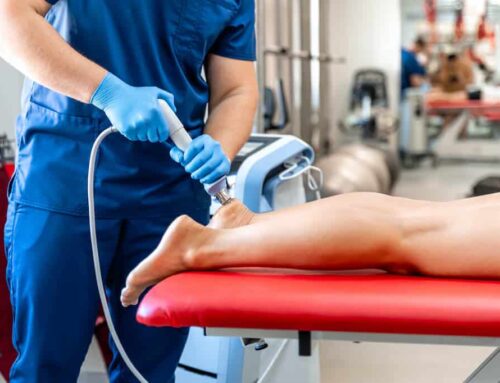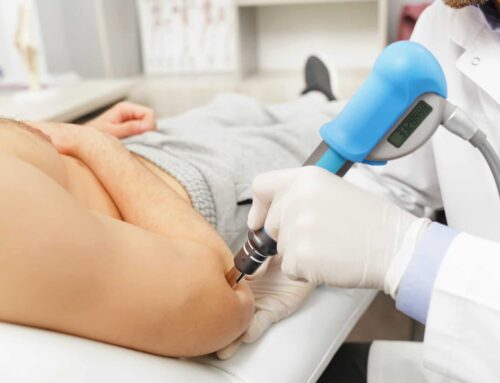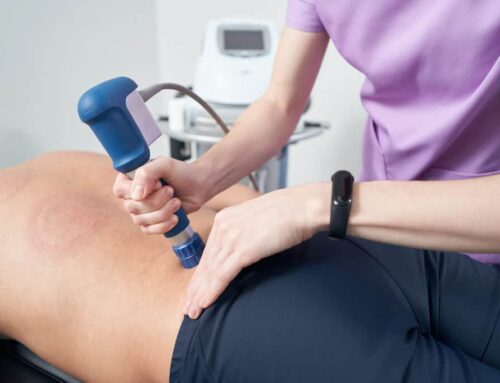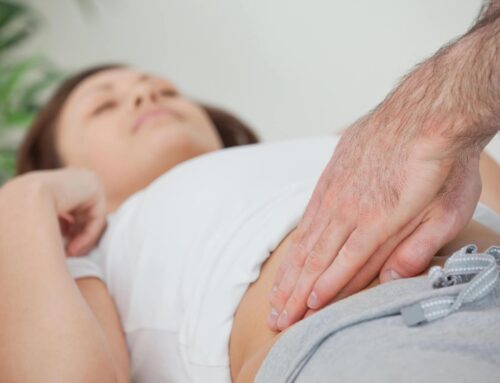
“Stretch? HA! All I do is run!”
Does this sound familiar? Runners love to run – it takes minimal equipment, can be done just about anywhere, and gives you those warm, fuzzy feelings of accomplishment and stress relief. But just running, over miles and miles, can lead to overuse injuries due to the repetitive nature and lack of variability in your movements.
Mobility for runners is extremely important in order to run faster and stay healthy while doing so. Read on to find out:
- Why trunk, hip and ankle mobility is necessary for runners
- The top 5 mobility exercises to start today
Why Mobility For Runners Necessary
Running is more complicated than it may seem. Oftentimes, people want to start running in order to get fit. However, there is a certain level of fitness that should be achieved prior to starting a running program, particularly if you’re someone who wants to get faster and avoid injury (pretty much everyone). Without an adequate amount of mobility and strength, you’re much more susceptible to injury as you increase your training volume and intensity.
The primary motions that are needed in runners but are also often limited are extension of the hip, dorsiflexion of the ankle, extension of the big toe, and a small amount of rotation of the mid-back.
Extension of the Hip
In order to continue to move forward, we need to get each leg behind our body, over and over again. This requires a certain amount of mobility at the hips. Often runners are limited by tight hip flexors. We need to be able to get each leg far behind the body without arching the back or rotating the pelvis. Even if you’re not running world-record speed, you still need hip extension to avoid compensations in the low back or pelvis to get your leg behind you.
When you begin to pick up the pace during training runs, you’re going to need more hip mobility than you do just going for a super easy jog. Without adequate motion, your low back may arch to get the leg back. This can lead to compression and strain on joints. You may also experience rotation in the hips, which can cause compensatory rotation in the low back and create strain on joints or muscles on either side of the spine. Either of these changes in mechanics can subsequently increase the load on other structures down the leg, even contributing to knee or ankle issues!
Mobility for runners: Dorsiflexion of the Ankle + Extension of the Big Toe
Not only do we need motion at the hip, but also at the foot and ankle during running. The greatest amount of dorsiflexion (ankle bending with the toes coming toward your face) happens during mid-stance. Mid-stance is the phase when one foot is on the ground, and your body is starting to travel forward over that foot. At this point we need bend in the ankle.
Without this bend in the ankle, we are unable to move through the full range of motion that creates storage and release of energy via the Achilles tendon. When this occurs, the ability of the ankle to absorb shock decreases, shifting that load to other parts of the foot or up the chain to the knee, hip and low back. It also impairs the ability of the calf muscles to propel you forward, as they can no longer work as an effective spring. Ultimately, the loss of ankle bend leads to abnormal loads shifted to other joints as well as inefficiencies in forward propulsion – meaning increased injury risk, and impaired performance.
In addition to ankle bend, we also need bending at the big toe for optimal efficiency during push-off, when your leg is behind you and about to come off the ground. Without bend in the big toe, your foot may compensate by twisting or rolling which can lead to abnormal strain at the ankle.
Mid-back mobility for runners
Though it’s hard to see, the trunk rotates with each step during a run. Thoracic mobility is necessary not only for upright posture while running, but also to more evenly distribute forces throughout the spine. This will reduce abnormal strain on the lower back throughout your run.
Top 5 ‘Mobility For Runners’ Exercises to Start Today
Extension of the Hip
- Foam roll hip and thigh: 2-3 minutes before or after run. You can also take a lacrosse ball to the area, but that can be pretty intense, so start with the foam roll – more discomfort does not mean that you’re doing a better job. Start with every other day rather than every day on this one.
2. Kneeling hip flexor stretch: 2-3 sets of 30 seconds per leg.
Dorsiflexion of the Ankle and Extension of the Big Toe
- Foam roll calves: 2-3 minutes before or after your run. Start with every other day.
2. Calf stretch with towel under big toe: 2-3 sets of 30 seconds per leg. Try to feel a stretch not only in the calf muscle, but also in the bottom of the foot with the big toe stretch.
Mid-back Mobility
This exercise combines hip extension with trunk rotation – double whammy!
Runner’s Lunge: Rotate the arm up towards the ceiling 10 times on each side. Repeat 2x.
Strengthening is another important component to enhancing performance and preventing injury. Check out some introductory strength exercises in our post discussing knee pain after running. For those of you running with low back pain, we have additional tips and tricks available to relieve it! Try these out for a few weeks and if you’re still having trouble, it’s time to get it looked at by a professional. Fill out our contact form and our team will reach out to you as soon as possible!
Blog image: https://www.runnersworld.com/runners-stories/a20866614/4-things-i-discovered-after-forcing-myself-to-run-every-morning/





